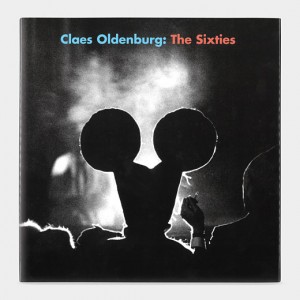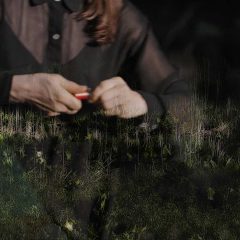—>Andrea reviews the catalog for the Claes Oldenburg exhibition now on view at MoMA and find much to like in the book. –the Artblog editors———————————–>
Claes Oldenburg: The Sixties, Museum moderner Kunst Stiftung Ludwig: Vienna and Prestel Verlag: Munich (2012) ISBN 978-3-7913-5205-3
A retrospective of Claes Oldenburg’s work is long overdue. That this exhibition was organized by a European museum, the Museum moderne Kunst Stiftung Ludwig Wien (MUMOK) is a bit surprising, although European museums have been consistent in favoring Pop and related work that is clearly critical, rather than celebratory of consumer culture. The exhibition is currently on view at MoMA and will travel to the Walker. That the exhibition addresses his work from the sixties should not be a surprise. It was a very fertile period during which Oldenburg produced major work, much of it fragile or ephemeral, which continues to have resonance for artists. The project was likely to be possible only after the death of Coosje van Bruggen, Oldenburg’s collaborator and wife since 1976, who preferred to ignore his previous personal and artistic collaborations.
Notable essays in the catalog
The catalog is one of the rare examples of a monograph on a living artist that includes articles of significant depth by multiple authors. The curator, Achim Hochdörfer, locates Oldenburg’s work of the sixties within the rejection of Abstract Expressionism by younger artists, amidst urban renewal in New York, as another turn to primitivism, as a critique of consumerism, and an exploration of the presentation of art and the status of the artist. He emphasizes the variable status of the artist’s work, which characteristically includes variants (soft and ghost versions of many subjects and work available in multiple sizes) and Oldenburg’s ongoing interest in the relationship between the gallery space and the outside world. Gregor Stemmrich traces the evolution of Oldenburg’s soft sculptures into large, outdoor monuments in light of a general questioning of sculpture as well as discussion around public art.
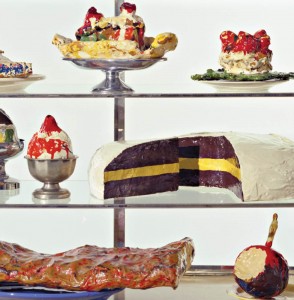
The essay by Brandon Joseph focuses on Oldenburg’s performance works. They drew on the artist’s readings on fetishism, primarily those of Wilhelm Steckel. Oldenburg cautioned that psychoanalysis was not read as medicine but poetry (which is how most artists read philosophy and other theoretical writings). He also stressed that the performances were about objects rather than action. Joseph cites the artist’s statement of his violent need to make fantasies live and the dialectic of life and death that inevitably results. He also addresses the eroticism that pervades the performances. Ann Temkin looks at the notebook pages on which Oldenburg pasted advertisements cut from newspapers and magazines and occasionally annotated. She presents them as arenas for the recurring obsessions that dictate how the artist extracts form from the surrounding chaos. Temkin dissects Oldenburg’s use of ordinary objects as they were conveyed in reproduction, so that a sculpture would be inspired by an advertisement for a bed, complete with photographic conventions and distortions, rather than the bed itself.
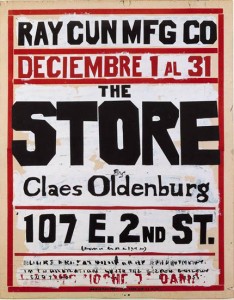
Benjamin Buchloh situates Oldenburg’s work in terms of the dialectic of modernism and mass culture, employing a psychoanalytic view of fetishism and commodity culture. He emphasizes the development of Ray Gun as both Oldenburg’s alter ego and frequent subject and discusses the Ray Gun as a commodity. But the Ray Gun is not a commodity. It is a fiction, an imaginary, phallic tool of empowerment whose primary audience is pre-adolescent boys.
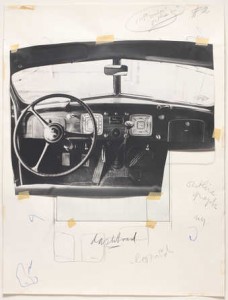
The Ray Gun Wing
In his Ray Gun Wing, Oldenburg presents detritus scavenged from city streets as objects worthy of display. During a time when protests against the war in Viet Nam are proliferating, all he can see in the abject materiality of his finds is the repeated image of an imaginary weapon, remembered from childhood. The Ray Gun Wing expresses all of Oldenburg’s uncertainties about producing art, for artists use base materials to turn their fantasies into objects – works of art. These become objects for sale, the most valued of which will be put on museum display. And some boys who play with imaginary guns grow up to wage war.
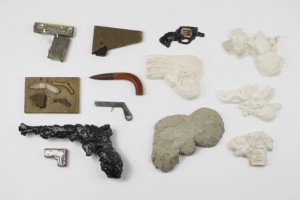
The design of the book itself
The catalog is extensively illustrated with Oldenburg’s photographs of downtown New York, reproductions of individual works, and period photos of works in the studio and early exhibitions, including an interesting sequence of the artist installing a gallery exhibition in 1962. The performances are also documented with numerous photographs. The designer, Joseph Logan, has done a superb job with a difficult task, creating a particularly handsome book about work that is raw, and not distorting it. He used blind-stamping on the cloth cover, full-page bleeds of environments, and sequential images from performances and films. Oldenburg’s manifesto that begins: I am for an art that is political-erotical-mystical, that does something other than sit on its ass in a museum. is printed on the inside of the dust jacket, giving it some of the eccentricity of the artist’s 1967 book, Store Days, where the complete manifesto was first published. That publication came with the business card of Oldenburg, as the store’s proprietor, in a small glassine envelope glued to the end-papers.



